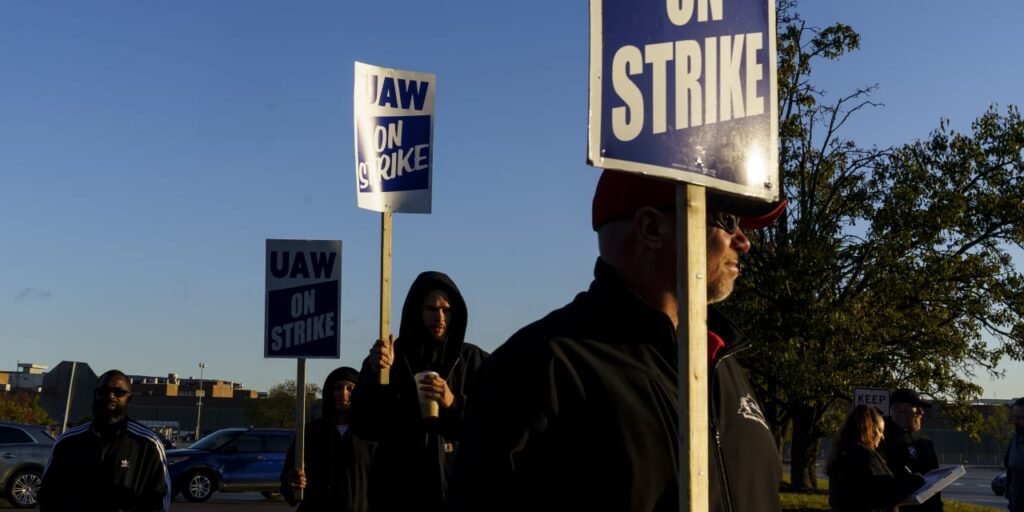The United Auto Workers negotiation this year has been unlike any other in recent memory. Finishing the process won’t be typical either. Still, history can offer a guide to when everything will be all wrapped up.
The UAW went on strike against the Detroit Three auto makers on Sept. 15. It started relatively small with about 12,000 workers walking out at three plants. Now about 45,000 workers are on the picket lines with the UAW striking at some of the auto makers’ most profitable factories.
Striking all three at once was unique. In the past, the UAW would pick one auto maker, reach a deal, then use that deal as a pattern for the other two.
In the 2019 negotiation,
General Motors
(ticker: GM) was the lead company. The UAW signed a four-year deal after a 40-day strike. That strike started on Sept. 15, and a tentative agreement was reached on Oct. 16. Workers stayed out until the deal was signed on Oct. 25.
It took nine days to ratify the deal. That puts the
Ford Motor
(F) ratification at, perhaps, Friday, Nov. 3. Ford and the UAW announced a tentative agreement on Wednesday.
Ratification can’t be assured. Workers have high expectations, partly because they have been feeling the pinch from high inflation for the past four years. Ultimately, it is the UAW leadership’s job to convince members this is the best deal possible.
In 2019, Ford reached a tentative agreement five days after the GM deal was signed. It was ratified about two weeks later.
Stellantis
(STLA) didn’t sign its deal until Dec. 11. That was 47 days after the GM strike ended.
Things aren’t likely to take that long. There was no additional strike in 2019, it was just wrapping up negotiations with the other two auto makers after the GM strike ended. This time, GM and
Stellantis
won’t want to keep workers while Ford is back making vehicles.
The five-day timeframe for other tentative agreements is probably realistic for 2023. That puts tentative agreements for GM and Stellantis early next week and the strike completely wrapped up by Nov. 8 or Nov. 10.
If tentative agreements don’t come next week it’s a sign of new sticking points. The UAW and the car companies don’t seem to be battling over wages anymore. Wage increases in the range of 25% over the four-year deal feel like a fait accompli. Things like the right to strike over plant closures and representing battery workers are what could derail the process.
Once the strike wraps up, investors can get back to evaluating auto maker stocks. They tend to avoid them during strikes.
Through early trading Friday, Ford and GM shares were down 27% and 29%, respectively since the start of July, when labor issues came to the forefront. The
S&P 500
has fallen about 7% over the same span. Shares of Stellantis, a more global company, were up about 4%.
Not all of the Ford and GM drop is UAW-related. Ford reported disappointing third-quarter results on Thursday.
Ford Chief Financial John Lawler said on a call with media after the release that the new labor deal could add hundreds of dollars per unit. Now its management’s job to offset the labor cost increases.
Write to Al Root at [email protected]
Read the full article here



